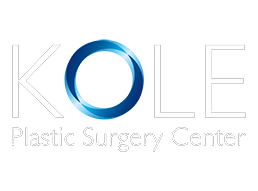By Dr. Edward Kole, Double Board-Certified Plastic Surgeon
As a plastic surgeon with decades of experience helping patients achieve their aesthetic goals, I’ve seen firsthand how transformative a tummy tuck can be—not just physically but also emotionally. For many of my patients, abdominoplasty (the medical term for a tummy tuck) represents a significant milestone in their journey, whether after pregnancy, major weight loss, or simply addressing changes that come with aging. Today, I want to share comprehensive insights about this popular procedure, which remains one of the top five cosmetic surgical procedures in the United States, with over 130,000 performed annually, according to the American Society of Plastic Surgeons.
What Exactly Is a Tummy Tuck?
A tummy tuck is a surgical procedure designed to create a firmer, smoother abdominal profile by removing excess skin and fat from the middle and lower abdomen while tightening the muscles of the abdominal wall. Unlike liposuction, which only removes fat, a tummy tuck addresses both loose skin and weakened or separated muscle issues that cannot be corrected through diet and exercise alone.
There are several variations of the procedure, including:
- Full abdominoplasty: Addresses the entire abdominal area, with an incision from hip to hip just above the pubic area
- Mini-tummy tuck: Focuses on the area below the navel with a shorter incision
- Extended tummy tuck: Includes the flanks and lateral thigh areas
- Circumferential abdominoplasty: Addresses the entire midsection including the back
It’s also worth noting that tummy tucks are frequently performed as part of a “Mommy Makeover”—a combination of procedures designed to restore a woman’s pre-pregnancy figure, typically including breast enhancement alongside abdominal contouring. In my practice, approximately 50% of the tummy tucks I perform are part of these comprehensive mommy makeover plans.
Why People Choose Tummy Tucks
The decision to undergo a tummy tuck is deeply personal, but there are several common reasons my patients pursue this procedure:
Post-pregnancy changes: During pregnancy, the abdominal muscles and skin stretch to accommodate the growing baby. This often results in diastasis recti, a separation of the abdominal muscles that creates a “pooch” that exercise cannot fix. Studies show that up to 60% of women experience diastasis recti after pregnancy.
Major weight loss: Patients who have lost significant weight, whether through bariatric surgery or lifestyle changes, often find themselves with excess hanging skin that doesn’t retract. According to recent research, nearly 70% of massive weight loss patients seek body contouring procedures.
Aging and genetics: Natural aging processes and genetic factors can lead to loose abdominal skin and reduced muscle tone. After age 30, our bodies produce approximately 1% less collagen each year, contributing to skin laxity.
Previous surgeries: Multiple C-sections or other abdominal surgeries can result in unfavorable scarring or contour irregularities that can be improved with a tummy tuck.
The Tummy Tuck Journey: Before, During, and After
Before Surgery: The Consultation and Preparation
The journey begins with a thorough consultation. During this meeting, I evaluate the patient’s abdominal anatomy, discuss their aesthetic goals, and review their medical history. Ideal candidates are generally healthy, at a stable weight, non-smokers, and have realistic expectations about the outcome.
In preparation for surgery, patients typically need to:
- Undergo standard pre-operative testing
- Stop taking certain medications and supplements that may increase bleeding
- Quit smoking at least six weeks before surgery (smoking significantly impairs healing)
- Arrange for assistance during the initial recovery period
- Prepare their home environment for a comfortable recovery
During the Procedure: What Actually Happens
On the day of surgery, a tummy tuck generally follows these steps:
- Anesthesia: The procedure is performed under general anesthesia for patient comfort and safety.
- Incisions: For a full tummy tuck, an incision is made horizontally between the hip bones, just above the pubic area. A second incision is aslo made around the navel. For a mini-tummy tuck, a smaller incision is used.
- Muscle repair: The abdominal muscles are brought together and sutured into a tighter position, creating a firmer abdominal wall and narrower waistline.
- Skin and fat removal: Excess skin is trimmed away, and liposuction is often used to remove stubborn fat deposits and refine the contour.
- Closure: The remaining skin is redraped over the newly tightened muscles, the navel is repositioned, and all incisions are carefully closed with layered sutures.
The procedure typically takes 2-3 hours for a standard tummy tuck, although this varies depending on the extent of the skin removal and whether it’s combined with other procedures.
After Surgery: The Initial Recovery Phase
Following surgery, patients can expect:
- To wear a compression garment to minimize swelling and support the abdomen
- Temporary drains to remove excess fluid (typically removed within 1-2 weeks)
- Prescribed pain management medication
- A modified standing/bending position for the first week to avoid tension on the incision
- Limited physical activity for 4-6 weeks
Most patients can return to sedentary work within one week, though complete recovery takes longer. It’s crucial to follow all post-operative instructions during this phase to ensure optimal healing and results.
Recovery Timeline and What to Expect
Recovery from a tummy tuck is a gradual process:
Week 1-2: This is the most challenging period. Patients will experience swelling, bruising, and discomfort. Movement is limited, and assistance with daily activities is necessary.
Weeks 3-4: Most patients begin to feel more comfortable and can gradually resume light activities. The compression garment is still worn, but swelling begins to subside.
Weeks 4-6: Many patients can return to most normal activities, though strenuous exercise and heavy lifting are still restricted.
Months 2-3: Exercise restrictions are typically lifted, and patients begin to see their final contour emerging as residual swelling subsides.
6 months to 1 year: The final results settle in, with scars fading significantly over this period.
According to patient satisfaction studies, despite the relatively lengthy recovery, tummy tuck procedures have a satisfaction rate exceeding 95%, one of the highest among cosmetic surgical procedures.
The Benefits of a Tummy Tuck
The benefits of abdominoplasty extend beyond mere aesthetics:
Improved abdominal contour: The most obvious benefit is a flatter, firmer abdomen that better reflects your fitness efforts.
Enhanced core strength: Repair of diastasis recti can significantly improve core function and stability. Many patients report improvements in posture and reduction in back pain.
Better-fitting clothing: Patients enjoy wearing clothing styles they previously avoided, with 87% reporting greater clothing selection and confidence in a recent quality-of-life study.
Improved hygiene: Removal of the overhanging abdominal pannus eliminates skin fold irritation, rashes, and infections that can occur beneath excess skin.
Increased physical activity: Many patients report becoming more physically active after surgery, with one study noting a 50% increase in exercise frequency among tummy tuck patients one year post-procedure.
Long-lasting results: With weight maintenance, the results of a tummy tuck are essentially permanent.
Why a Tummy Tuck May Be Your Best Option
While there are non-surgical treatments claiming to tighten abdominal skin, none can address significant skin laxity or repair separated muscles. For patients with these concerns, a tummy tuck offers the most comprehensive solution.
Unlike temporary or partial measures, a tummy tuck:
- Surgically removes excess skin rather than just shrinking it
- Directly repairs muscle separation
- Permanently removes stubborn fat deposits
- Reshapes the entire abdominal area for a harmonious result
For mothers who have completed their families, the combination of muscle repair and skin excision can restore pre-pregnancy contours in ways no amount of exercise can achieve. This is precisely why the tummy tuck is a cornerstone procedure in mommy makeovers, offering women the opportunity to reclaim their bodies after the physical demands of pregnancy and childbirth.
If you’ve struggled with abdominal contour issues despite maintaining a healthy lifestyle, you may find that a tummy tuck provides the solution you’ve been seeking. As a double board-certified plastic surgeon, I’m committed to helping you achieve natural-looking results that complement your body’s proportions and enhance your quality of life. To learn more about how a tummy tuck might benefit you personally, I invite you to contact The Kole Plastic Surgery Center at 215-315-7655 to schedule your complimentary consultation.






